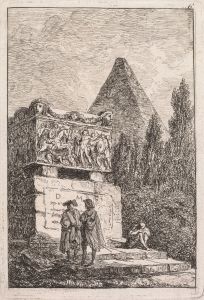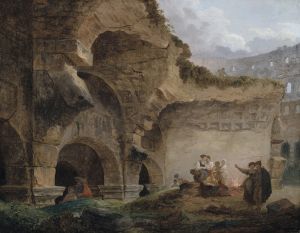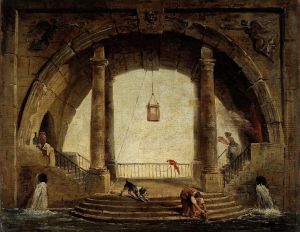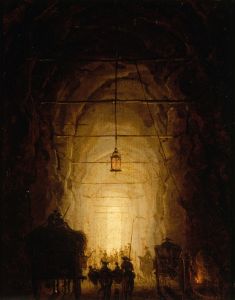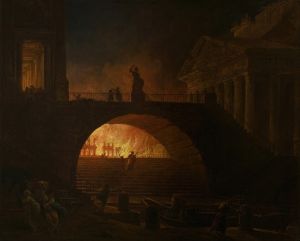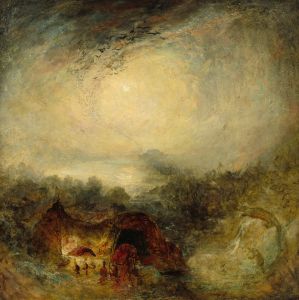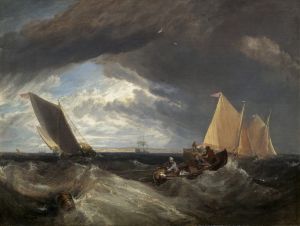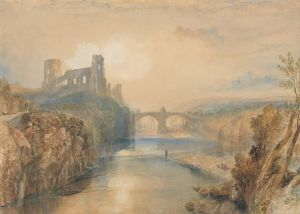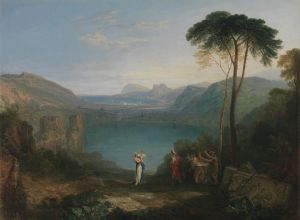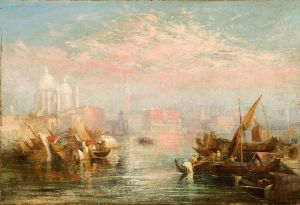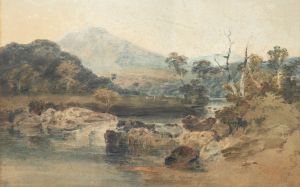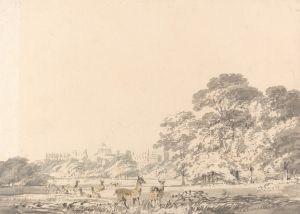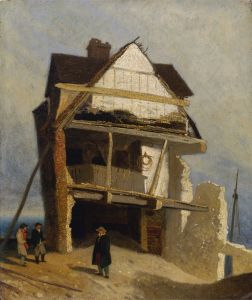
Llanthony Abbey, Monmouthshire
A hand-painted replica of Joseph Mallord William Turner’s masterpiece Llanthony Abbey, Monmouthshire, meticulously crafted by professional artists to capture the true essence of the original. Each piece is created with museum-quality canvas and rare mineral pigments, carefully painted by experienced artists with delicate brushstrokes and rich, layered colors to perfectly recreate the texture of the original artwork. Unlike machine-printed reproductions, this hand-painted version brings the painting to life, infused with the artist’s emotions and skill in every stroke. Whether for personal collection or home decoration, it instantly elevates the artistic atmosphere of any space.
Joseph Mallord William Turner, one of the most renowned British artists of the 19th century, is celebrated for his expressive colorization, imaginative landscapes, and turbulent marine paintings. Among his extensive body of work is the painting "Llanthony Abbey, Monmouthshire," which captures the serene yet majestic ruins of Llanthony Priory, located in the Vale of Ewyas in Monmouthshire, Wales.
Llanthony Priory was originally founded in the early 12th century by Norman nobleman Walter de Lacy. It became an Augustinian priory, and its remote location in the Black Mountains of Wales made it a site of both spiritual retreat and architectural beauty. Over the centuries, the priory faced numerous challenges, including attacks during the Welsh uprisings and eventual dissolution under King Henry VIII's Dissolution of the Monasteries in the 16th century. By the time Turner visited the site, it was a picturesque ruin, which had become a subject of interest for artists and poets inspired by the Romantic movement.
Turner, known for his ability to capture the sublime in nature, visited Llanthony Abbey during his travels across Britain. His depiction of the abbey is a testament to his skill in rendering atmospheric effects and his fascination with historical architecture. The painting is believed to have been created in the early 19th century, a period when Turner was increasingly drawn to the dramatic interplay of light and shadow, as well as the emotional resonance of historical sites.
In "Llanthony Abbey, Monmouthshire," Turner employs his characteristic use of light to evoke a sense of tranquility and timelessness. The ruins are bathed in a gentle light, which highlights the intricate stonework and the surrounding lush landscape. The composition reflects Turner's interest in the contrast between the enduring beauty of nature and the transient nature of human constructs. The abbey, though in ruins, stands as a testament to the passage of time and the enduring allure of historical sites.
Turner's work often transcended mere topographical accuracy, aiming instead to capture the essence and mood of a place. His portrayal of Llanthony Abbey is no exception, as it conveys both the physical beauty of the site and the emotional impact it had on him as an artist. This approach aligns with the Romantic era's emphasis on emotion, nature, and the sublime, themes that are prevalent throughout Turner's oeuvre.
"Llanthony Abbey, Monmouthshire" is part of Turner's broader exploration of Britain's historical and natural landscapes. His works from this period often reflect a deep appreciation for the country's rich history and diverse scenery. Turner's ability to blend realism with romanticism has cemented his reputation as one of the foremost landscape painters of his time.
Today, Turner's paintings, including his depiction of Llanthony Abbey, are celebrated for their innovative use of color, light, and composition. They continue to inspire artists and captivate audiences, offering a window into both the physical and emotional landscapes of 19th-century Britain. Turner's legacy as a pioneer of landscape painting endures, and his works remain a significant part of the art historical canon.





![Temple of Kalabshee [Kalabsha, Kalâbishah], Nubia. Nov. 1838.](/imgs/217548/s/david-roberts-temple-of-kalabshee-kalabsha-kalabishah-nubia-nov-1838-be0ac440.jpg)
